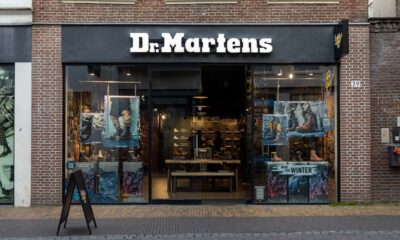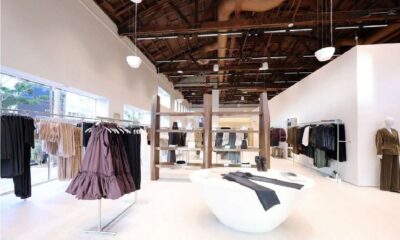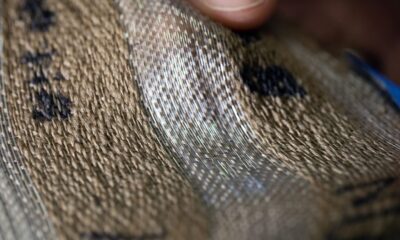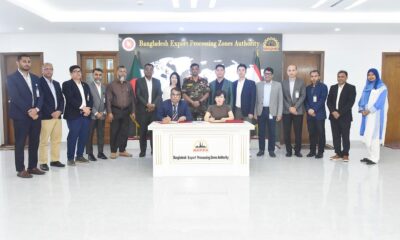Fashion
Stitching a bright future: Bihar’s rise in garment manufacturing
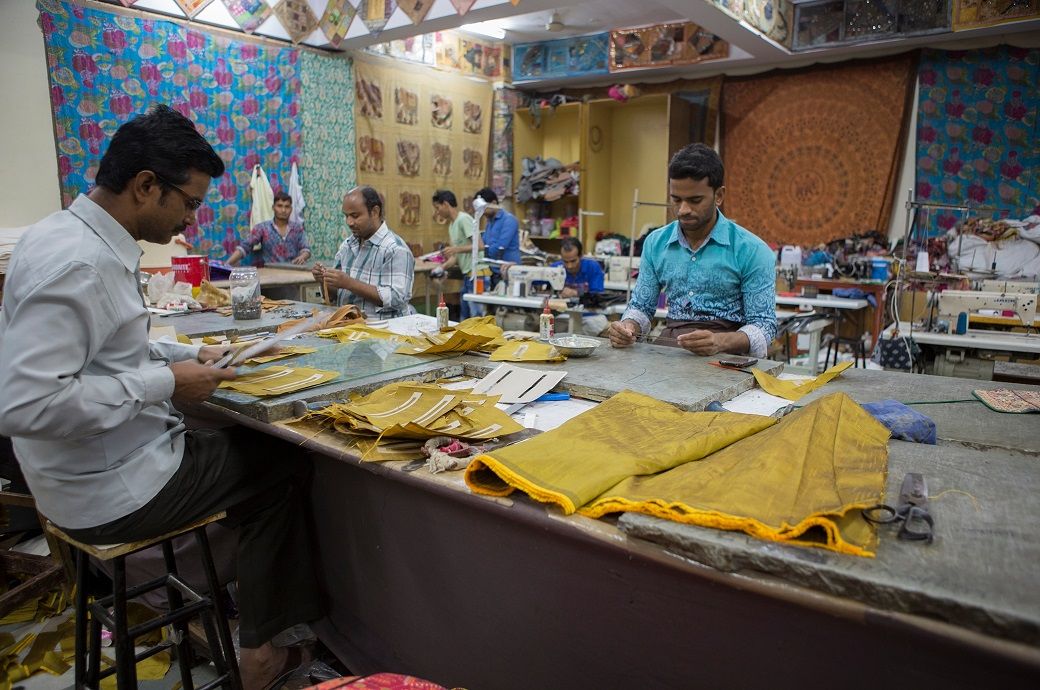
As land, labour, and operational costs continue to rise in India’s urban areas, apparel and textile companies are actively exploring cost-effective alternatives. This structural shift is steering investors’ focus toward rural and semi-urban regions with the potential to support large-scale manufacturing.
Bihar is gaining prominence as an apparel manufacturing hub, with its strategic location near key markets and an abundance of trainable labour driving investor interest.
Bihar’s Industrial Policy 2025 offers financial incentives and land allotments to attract investment.
Infrastructure projects, including the Eastern Freight Corridor, are enhancing connectivity and scalability for manufacturers.
Among the frontrunners in this evolving landscape is Bihar, an eastern state increasingly being seen as a credible, long-term hub for textile and apparel production.
Bihar’s comparative advantage lies in its vast pool of affordable, trainable labour and a growing support system of enabling policies, infrastructure upgrades, and availability of land for industries.
With manufacturing decentralisation becoming a dominant trend, the state’s strategic location near the key consumer markets of Delhi and Kolkata, as well as proximity to states like Uttar Pradesh, Jharkhand and the neighbouring country Nepal, further strengthens its appeal.
This proximity reduces transportation time and logistics costs, facilitating faster delivery.
Union Minister of State for Textiles and External Affairs, Pabitra Margherita, during a recent visit to Patna, emphasised Bihar’s potential to become a major centre for readymade garment manufacturing.
He pointed to increasing interest from leading apparel manufacturers, several of whom are now setting up production units in the state. Begusarai, in particular, has already seen the commencement of operations at a few such facilities, indicating early-stage traction.
Institutional partnerships are also playing a key role in building industry-ready human capital. One notable example in this direction is the signing of a Memorandum of Understanding (MoU) between NIFT Patna—operating under the Ministry of Textiles—and Aditya Birla Fashion and Retail Limited (ABFRL), one of India’s largest fashion conglomerates.
The partnership, formally announced in the presence of Union Minister of Textiles Giriraj Singh, is aimed at empowering rural women through targeted skill development and direct employment integration.
The collaboration will train members of self-help groups, popularly known as Jeevika Didis, in core garment manufacturing processes, quality control systems, and machine operations.
These training sessions will be conducted at NIFT Patna and its extension centres.
Once trained, these women will be eligible for employment at ABFRL’s upcoming manufacturing unit in Begusarai.
As per the Union Minister of Textiles, the programme is expected to benefit over 3.5 lakh women in its initial phase, with plans to extend coverage to adjoining districts.
This integrated approach—linking skill development to formal employment within a structured industrial framework—is a model that could reshape Bihar’s textile landscape. It not only addresses workforce readiness but also promotes women’s economic inclusion, a key enabler of sustainable industrial growth.
The momentum is not limited to training and pilot projects.
In an important step toward strengthening Bihar’s apparel manufacturing base, a new readymade garment unit has also reportedly been announced in the Bela Industrial Area, Phase 2 of Muzaffarpur.
Developed by M/s Gogreen Apparel Limited, the project reportedly entails a private investment of ₹23.36 crore, and upon completion, the facility will reportedly have an estimated annual production capacity of 5.5 million garments.
As per media reports, Bihar Deputy Chief Minister Samrat Choudhary confirmed that the unit falls within the textile and leather sector, which the state government has designated a high-priority industry under its recently approved Industrial Policy 2025.
The policy framework offers a comprehensive range of incentives—including capital subsidies, land allotments, tax exemptions, and dedicated support for skill development—intended to attract private investment and spur job creation.
He further emphasised that this unit represents a tangible step in Bihar’s broader industrial strategy. The goal is to position the state as a robust player in India’s textile manufacturing value chain while simultaneously enhancing its employment and economic growth metrics.
These efforts are being reinforced by investments in infrastructure and logistics designed to close existing gaps and prepare the state for scalable industrial activity.
While the outlook is positive, there remain some challenges nonetheless!
In several rural areas, unreliable electric supply poses a threat to production schedules while also raising the operational costs. Manufacturers are forced to rely on backup systems, which reduces cost competitiveness.
Limited warehousing facilities and last-mile connectivity also reportedly offer challenges, affecting supply chain reliability and turnaround times.
However, solutions are not that far. Infrastructure development is already underway, most notably through projects like the Eastern Freight Corridor, which is expected to significantly improve logistics.
This corridor will enhance connectivity with major ports and industrial centres, thereby enabling easier access to raw materials and reducing transportation delays for finished goods.
In parallel, the state government has reportedly taken proactive steps to allocate large tracts of land for industrial purposes, with a focus on textile parks and integrated garment clusters.
These developments are designed to accommodate modern factories and attract both domestic and foreign investors seeking cost-efficient and scalable production environments.
Several of these clusters are reportedly being designed with plug-and-play infrastructure, easing the entry barrier for manufacturers and reducing time-to-operations.
Bihar’s rising profile in the textile sector is also being aided by its competitive labour dynamics. The state’s large working-age population—most of whom are young, semi-skilled, and wage-competitive—represents a strategic advantage in an industry that remains highly labour-intensive.
This creates a workforce pipeline that can meet industry-specific demands with minimal lag.
The Bihar Industrial Investment Promotion Policy (BIIPP) has emerged as a critical growth enabler in this ecosystem. By offering targeted incentives tailored to the needs of manufacturing businesses, the policy aligns state support with market realities.
These include not only financial incentives but also institutional support, fast-tracked approvals, and sector-specific facilitation—key requirements for scaling operations quickly and sustainably.
Industry experts note that Bihar’s trajectory is timely. With global brands increasingly diversifying their sourcing strategies and India aiming to capture a larger share of the global textile market, non-traditional manufacturing destinations like Bihar stand to gain. The state’s potential lies in its ability to offer cost-effective and reliable production capacity by moving production away from congested and costlier hubs.
For exporters, manufacturers, and investors, Bihar today represents more than just a low-cost production base. It is a strategic growth opportunity—one that aligns with both domestic expansion and global supply chain realignment.
With proactive policy support, improving infrastructure, and deepening public-private collaboration, the state is setting the foundation for long-term industrial relevance in the textile and apparel sector.
While some infrastructure gaps and logistical challenges linger, Bihar is rapidly closing the gap between potential and performance and for an industry in transition, seeking scale, cost efficiency, and sustainability.
Fibre2Fashion News Desk (DR)
Fashion
Chanel debuts A$AP Rocky as ambassador, with Margaret Qualley teaser video

Published
November 30, 2025
Chanel has appointed A$AP Rocky as a new brand ambassador and debuted his tenure with a teaser video shot in New York co-starring Margaret Qualley.
The video appeared Sunday just 48 hours before Chanel’s couturier Michel Blazy will stage his debut collection of Métiers d’Art also in New York. It’s a unique line first created by Karl Lagerfeld that highlights the unique stable of artisans Chanel has assembled in such skills as embroidery, pleating, glove-making and costume jewelry.
Directed by Michel Gondry, the 2.49-minute short opens with the stars waking up in the bed of a walkup apartment in Williamsburg. Where, after a quick peck on her lover’s forehead, Qualley disappears into a tiny bathroom, before magically changing out of her blue nightie and reappearing in a red, white and blue houndstooth Chanel jacket, paired with pale blue pants, her hair in a chignon.
https://www.youtube.com/watch?v=live
No sooner than she has disappeared, than A$AP leaps out of bed and descends the tenement building’s outside steel stairs and sets off on a mad dash after Qualley. This leads to him swimming under the Brooklyn Bridge, and running north through the Lower East Side, before finally catching up with Qualley at Astor Place station. All the action backed up my moody ambient music courtesy of Le Motel.
In between, the rapper and husband of Rihanna, manages to find time to stop in two discount stores to acquire pants and a blazer. Arriving just in time, to genuflect onto one knee, and hold out a small white Chanel box, containing one assumes a diamond engagement ring, at the station entrance. The sight of which leads the actress to leap into the air in paroxysm of joy, before the happy couple march arm and arm back into the subway.
And off one assumes to attend the Métiers d’Art show, which will be revealed on Tuesday, 8 p.m. NYC time.
Copyright © 2025 FashionNetwork.com All rights reserved.
Fashion
Canada’s Lululemon revamps commercial strategy with new global leader
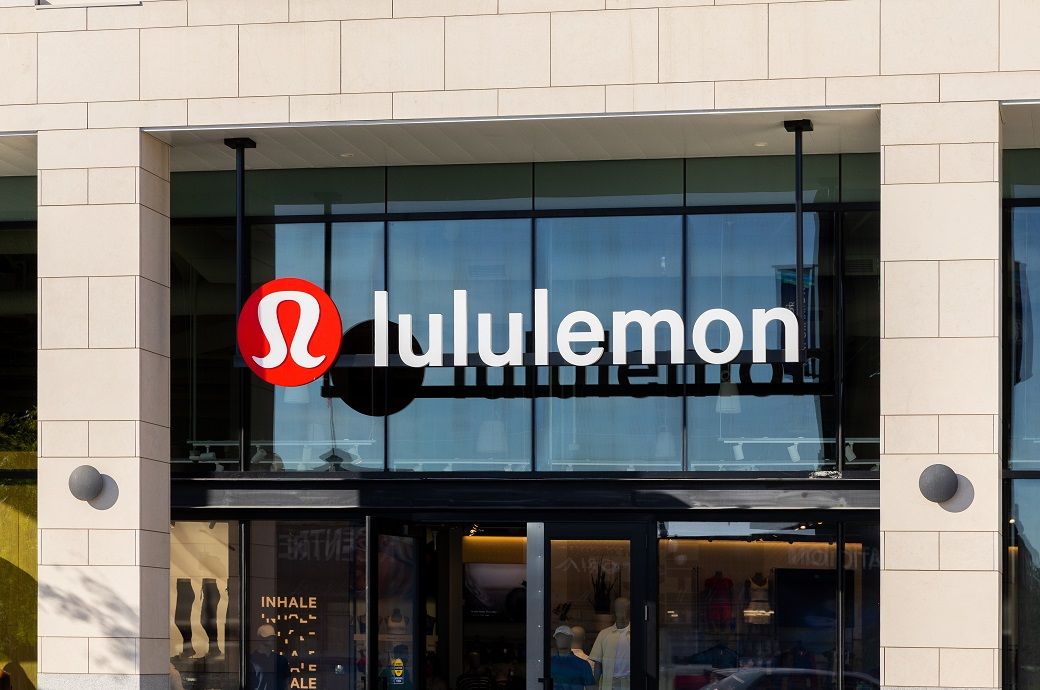
Ms. Burgoyne joined lululemon in 2006 and became the company’s first President in 2020. Throughout her tenure, she has assumed roles of increasing responsibility and led the North America business through periods of rapid growth and expansion.
Lululemon Athletica has announced that Celeste Burgoyne, president of the Americas and global guest innovation, will leave at the end of December 2025 after 19 years with the brand.
The company will consolidate regional leadership and has appointed André Maestrini as president and chief commercial officer, giving him global oversight of stores, regions, digital channels and commercial strategy.
“We are grateful for Celeste’s leadership and significant contributions to lululemon’s business and culture over the past 19 years. She has been instrumental in growing our footprint in the Americas, creating high-quality guest experiences, and mentoring our teams across the organization,” said Calvin McDonald, Chief Executive Officer, lululemon. “I deeply appreciate her partnership and friendship, and we wish her all the best in the future.”
“My time at lululemon has been both inspiring and rewarding beyond belief,” said Ms. Burgoyne. “I am so proud of what we have accomplished as an organization since I joined in 2006 and know the team will take the company to even greater heights in the years to come. I look forward to continuing to support the brand as a lifelong fan.”
In conjunction with this announcement, lululemon has made the decision to consolidate regional leadership across the company and appoint André Maestrini as President and Chief Commercial Officer, effective immediately. Mr. Maestrini will continue to report directly to Mr. McDonald.
In this newly created role, Mr. Maestrini will provide integrated oversight of all of lululemon’s regions, stores, and digital channels globally. He will also oversee lululemon’s global commercial strategy with a focus on continued market expansion, revenue generation, and accelerating best practice sharing, across all regions including North America.
Mr. Maestrini joined lululemon in 2021 as Executive Vice President of International. In his current role, he has overseen lululemon’s operations in EMEA, APAC, and China Mainland, and has helped to more than quadruple lululemon’s international revenues.
“André has demonstrated a proven ability to unlock opportunities, advance our global expansion, and deliver growth across multiple markets,” said Mr. McDonald. “Leveraging operational discipline, deep guest insights, and extensive brand-building experience, André is the ideal person to lead our business across all markets, including North America, as we remain focused on delivering value for our guests, employees, and shareholders.”
Before joining lululemon, Mr. Maestrini spent 14 years at adidas in various senior roles across the globe. During this time, he served in a number of General Manager positions where he helped grow the company’s global sports categories and regional markets. Prior to adidas, Mr. Maestrini held marketing roles at The Coca-Cola Company, Danone, and Kraft Jacobs Suchard.
Note: The headline, insights, and image of this press release may have been refined by the Fibre2Fashion staff; the rest of the content remains unchanged.
Fibre2Fashion News Desk (RM)
Fashion
India’s growth expected to be robust despite external headwinds: IMF
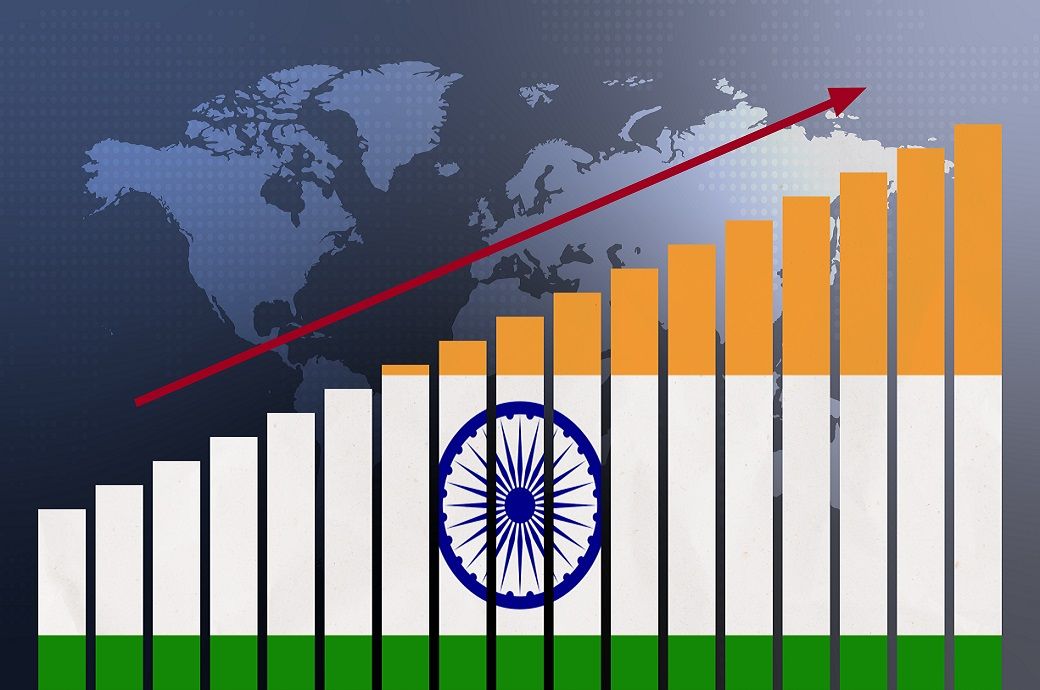
Under the baseline assumption of prolonged 50-per cent US tariffs, India’s real gross domestic product (GDP) is projected to grow at 6.6 per cent in fiscal 2025-26 (FY26) before moderating to 6.2 per cent in FY27, the IMF said.
The reform of the goods and services tax (GST) and the resulting reduction in the effective rate are expected to help cushion the adverse impact of tariffs.
Despite external headwinds, India’s growth is expected to be robust, backed by favourable domestic conditions, the IMF has said.
Assuming prolonged 50-per cent US tariffs, FY26 real GDP may grow at 6.6 per cent before moderating to 6.2 per cent in FY27.
Further deepening of geo-economic fragmentation could lead to tighter financial conditions, higher input costs and lower trade, FDI and economic growth.
Headline inflation is projected to remain well contained, reflecting the one-off effect of the GST reform and continued benign food prices, it remarked in a release.
Looking ahead, India’s ambition to become an advanced economy can be supported by advancing comprehensive structural reforms that enable higher potential growth, the IMF noted.
There are significant near-term risks to the economic outlook. On the upside, the conclusion of new trade agreements and faster implementation of structural reform domestically could boost exports, private investment and employment.
On the downside, further deepening of geo-economic fragmentation could lead to tighter financial conditions, higher input costs and lower trade, foreign direct investment (FDI) and economic growth.
Unpredictable weather shocks could affect crop yields, adversely impact rural consumption and reignite inflationary pressures, the IMF added.
Fibre2Fashion News Desk (DS)
-

 Sports7 days ago
Sports7 days agoWATCH: Ronaldo scores spectacular bicycle kick
-

 Entertainment7 days ago
Entertainment7 days agoWelcome to Derry’ episode 5 delivers shocking twist
-

 Politics7 days ago
Politics7 days agoWashington and Kyiv Stress Any Peace Deal Must Fully Respect Ukraine’s Sovereignty
-

 Business1 week ago
Business1 week agoKey economic data and trends that will shape Rachel Reeves’ Budget
-

 Tech5 days ago
Tech5 days agoWake Up—the Best Black Friday Mattress Sales Are Here
-

 Fashion7 days ago
Fashion7 days agoCanada’s Lululemon unveils team Canada kit for Milano Cortina 2026
-

 Tech5 days ago
Tech5 days agoThe Alienware Aurora Gaming Desktop Punches Above Its Weight
-

 Politics1 week ago
Politics1 week ago53,000 Sikhs vote in Ottawa Khalistan Referendum amid Carney-Modi trade talks scrutiny




